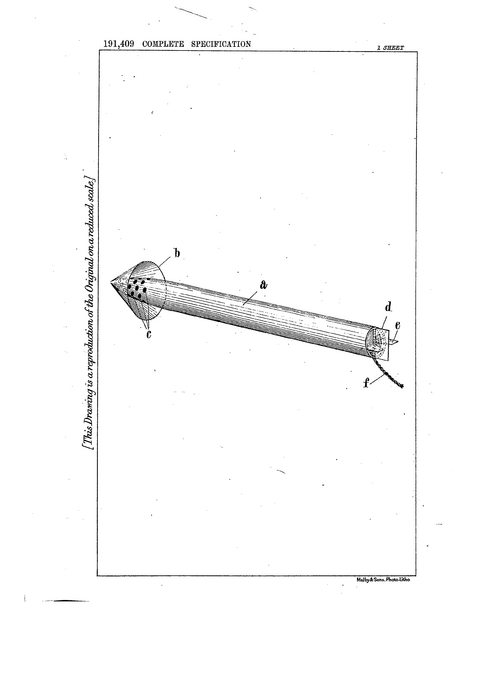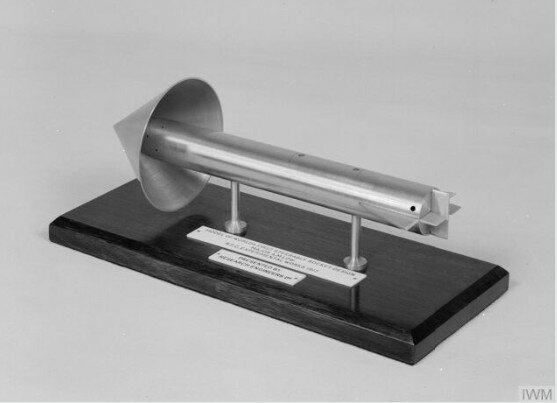Wandered into this from another board
 en.m.wikipedia.org
en.m.wikipedia.org
Archibald Low stated "in 1917 the Experimental Works designed an electrically steered rocket... Rocket experiments were conducted under my own patents with the help of Cdr. Brock"[16] Like Low, Brock was an experimental officer. Brock commanded the Royal Navy Experimental Station at Stratford. Pertinent to these rocket experiments, Brock was also a Director of the C.T. Brock & Co. fireworks manufacturers. The patent "Improvements in Rockets" was raised in July 1918 referring by then to the Royal Air Force. It was not published until February 1923 for security reasons. Firing and guidance controls could be either wire or wireless. The propulsion and guidance rocket eflux emerged from the deflecting cowl at the nose. The 1950s IWM exhibition label states "Later in 1917, an electrically steered rocket was designed…. with the designed purpose of pursuing a hostile airman." A model of this dirigible rocket was included in this exhibition.[17] The model was accompanied by a note: "Exhibit that is part of Professor AM Low's exhibits. Model of the wireless controlled dirigible rocket missile designed to pursue a hostile airman."
Anyone have any more information on this?
British unmanned aerial vehicles of World War I - Wikipedia
Archibald Low stated "in 1917 the Experimental Works designed an electrically steered rocket... Rocket experiments were conducted under my own patents with the help of Cdr. Brock"[16] Like Low, Brock was an experimental officer. Brock commanded the Royal Navy Experimental Station at Stratford. Pertinent to these rocket experiments, Brock was also a Director of the C.T. Brock & Co. fireworks manufacturers. The patent "Improvements in Rockets" was raised in July 1918 referring by then to the Royal Air Force. It was not published until February 1923 for security reasons. Firing and guidance controls could be either wire or wireless. The propulsion and guidance rocket eflux emerged from the deflecting cowl at the nose. The 1950s IWM exhibition label states "Later in 1917, an electrically steered rocket was designed…. with the designed purpose of pursuing a hostile airman." A model of this dirigible rocket was included in this exhibition.[17] The model was accompanied by a note: "Exhibit that is part of Professor AM Low's exhibits. Model of the wireless controlled dirigible rocket missile designed to pursue a hostile airman."
Anyone have any more information on this?


